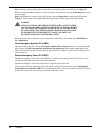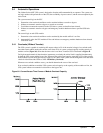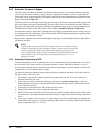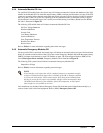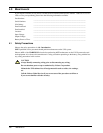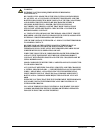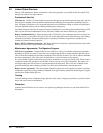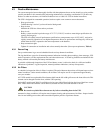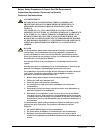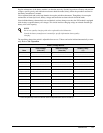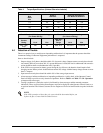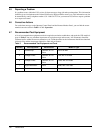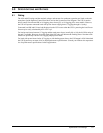
110 Maintenance
4.3.3 Battery Maintenance
Battery Safety Precautions
Servicing of batteries should be performed or supervised by personnel knowledgeable of batteries and the
required precautions. Keep unauthorized personnel away from batteries.
When replacing batteries, use the same number and type of batteries.
WARNING
THESE MAINTENANCE PROCEDURES WILL EXPOSE HAZARDOUS
LIVE PARTS. REFER SERVICING TO QUALIFIED PERSONNEL.
DC FUSES OPERATE AT THE RATED BATTERY VOLTAGE AT ALL
TIMES. A BLOWN DC BUS FUSE INDICATES A SERIOUS PROBLEM.
SERIOUS INJURY OR DAMAGE TO THE EQUIPMENT CAN RESULT IF
THE FUSE IS REPLACED WITHOUT KNOWING WHY IT FAILED. CALL
LIEBERT GLOBAL SERVICES FOR ASSISTANCE.
WARNING
LEAD-ACID BATTERIES CONTAIN HAZARDOUS MATERIALS.
BATTERIES MUST BE HANDLED, TRANSPORTED, AND RECYCLED OR
DISCARDED IN ACCORDANCE WITH FEDERAL, STATE, AND LOCAL
REGULATIONS. BECAUSE LEAD IS A TOXIC SUBSTANCE, LEAD-ACID
BATTERIES SHOULD BE RECYCLED RATHER THAN DISCARDED.
DO NOT DISPOSE OF BATTERY OR BATTERIES IN A FIRE. THE
BATTERY MAY EXPLODE.
DO NOT OPEN OR MUTILATE THE BATTERY OR BATTERIES.
RELEASED ELECTROLYTE IS HARMFUL TO THE SKIN AND EYES. IT
MAY BE TOXIC.
A battery can present a risk of electrical shock and high short circuit current.
The following precautions should be observed when working on batteries:
1. Remove watches, rings, or other metal objects.
2. Use tools with insulated handles.
3. Wear rubber gloves and boots.
4. Do not lay tools or metal parts on top of batteries.
5. Disconnect charging source prior to connecting or disconnecting battery
terminals.
6. Determine if battery is inadvertently grounded. If inadvertently grounded,
remove source of ground. Contact with any part of a grounded battery can
result in electrical shock. The likelihood of such shock will be reduced if
such grounds are removed during installation and maintenance.
Lead-acid batteries can present a risk of fire because they generate hydrogen
gas. The following procedures should be followed:
1. DO NOT SMOKE when near batteries.
2. DO NOT cause flame or spark in battery area.
3. Discharge static electricity from body before touching batteries by first
touching a grounded metal surface.



